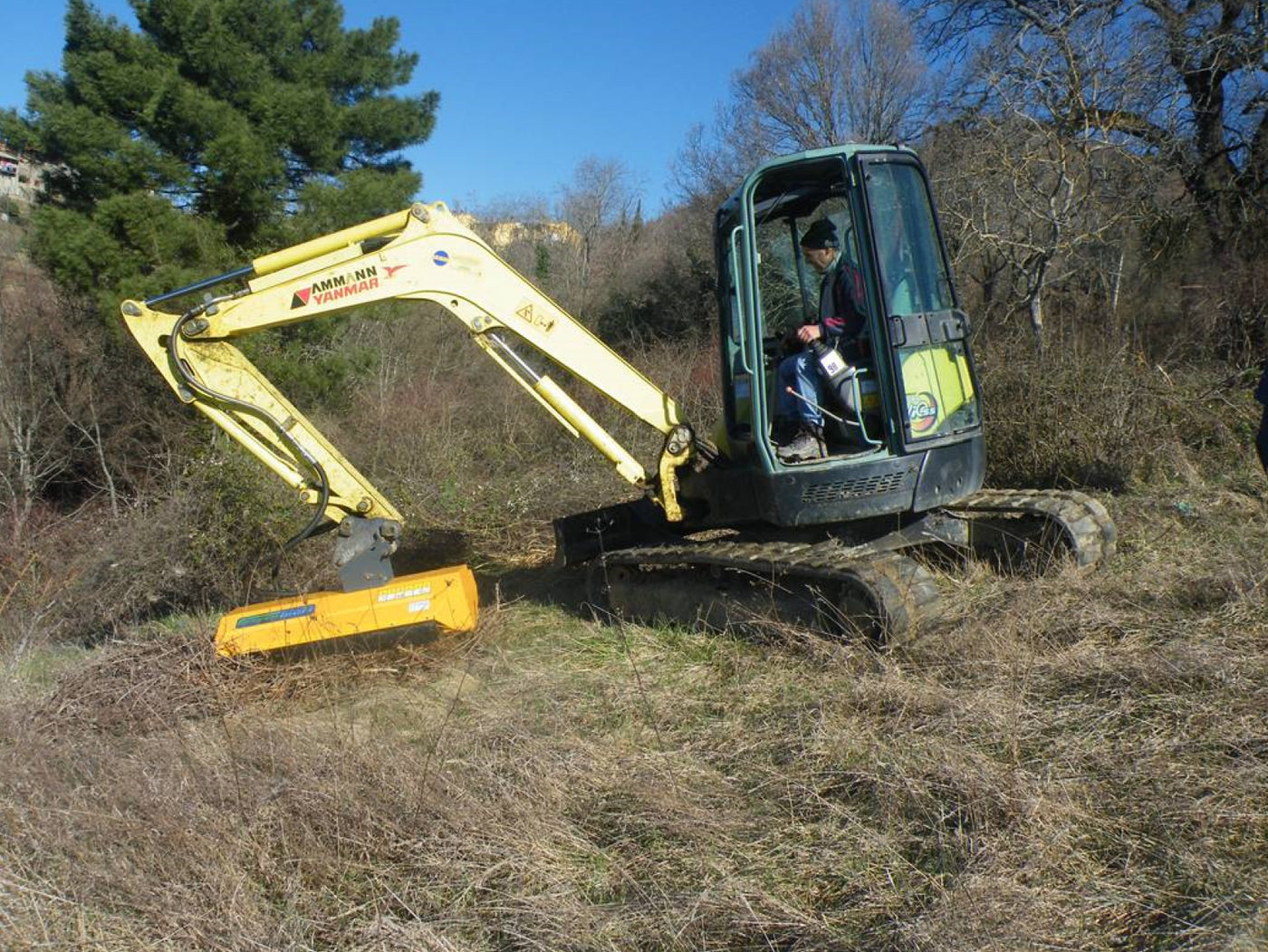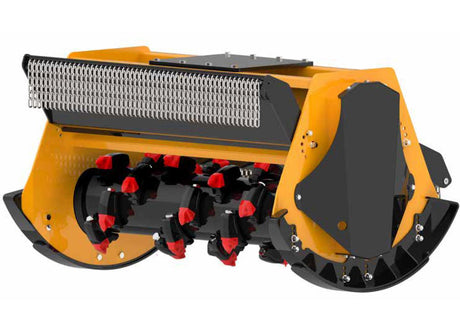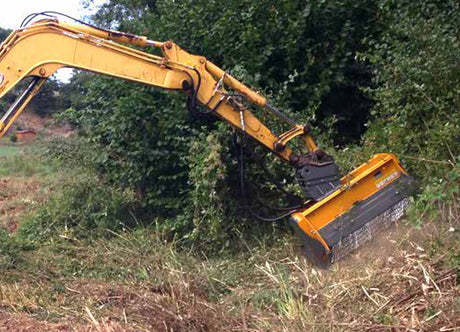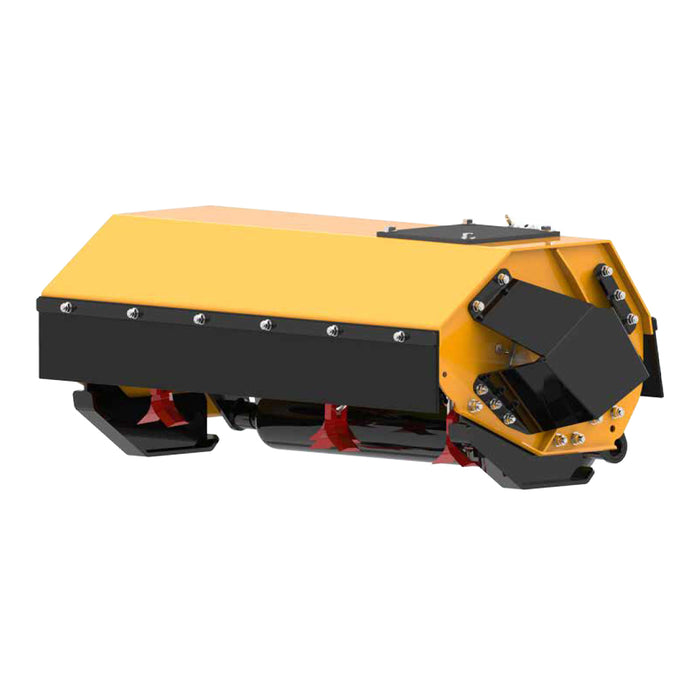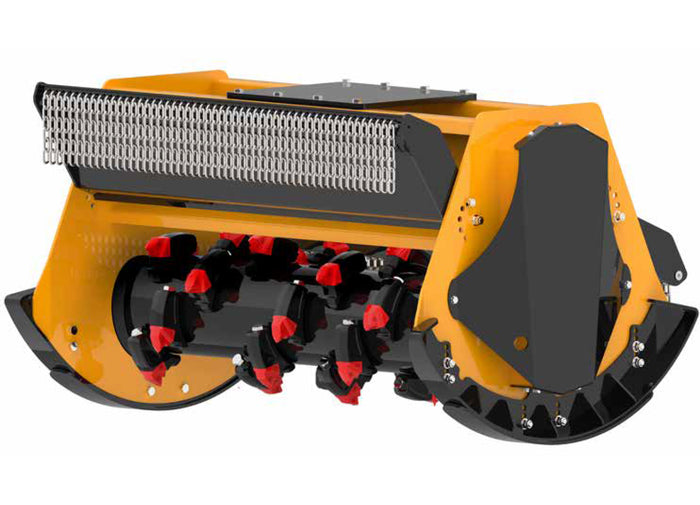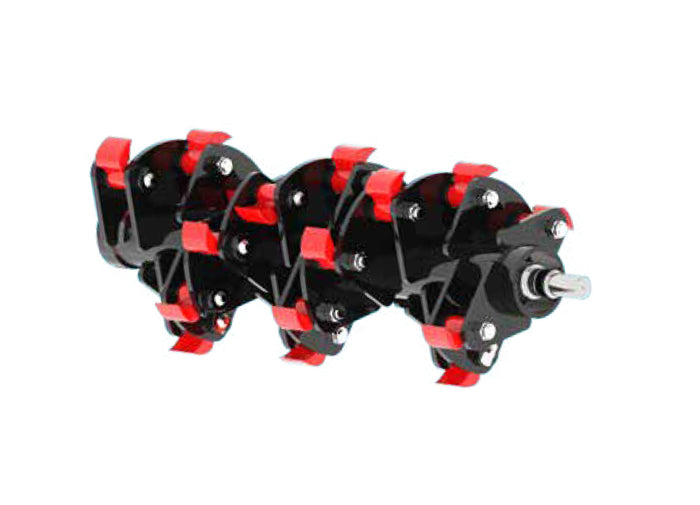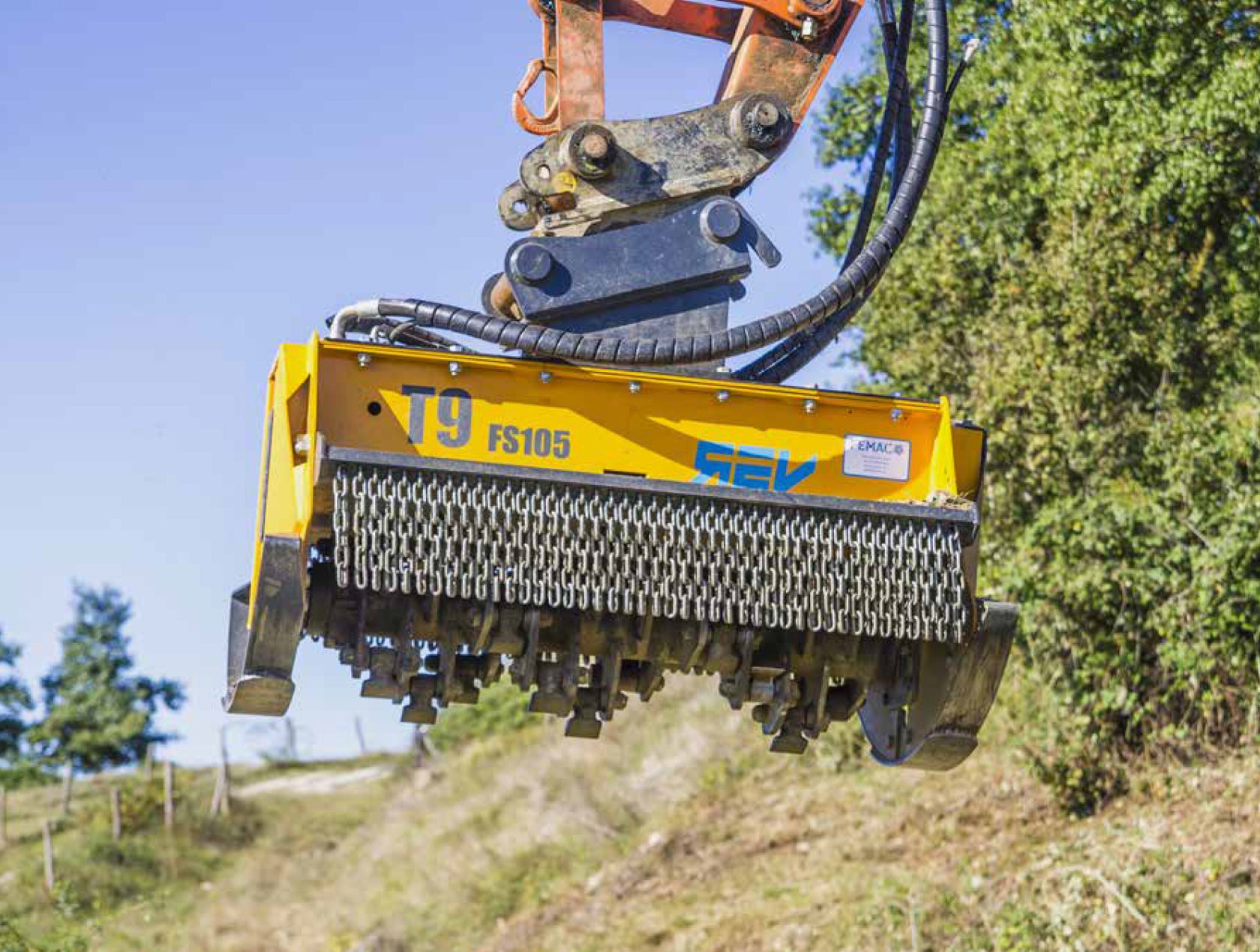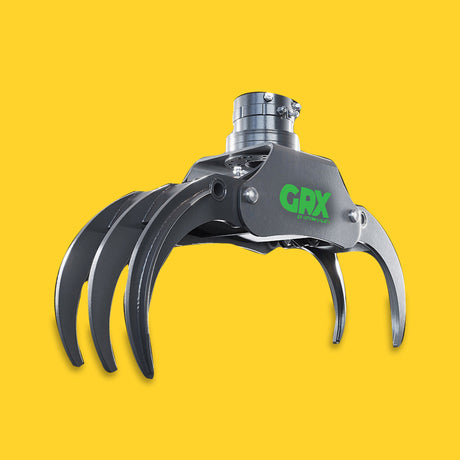Purpose built for Excavators, our range of Flails and Mulchers provides working widths from 0.8m up.
These attachments are perfect for tackling brush, low vegetation and on larger units even small trees.
We carry units in stock and top brackets to suit most excavators are made to order within a few days.
Flail 800mm mini excavators to 1.5 to 2.5t - hammers as std
£2,279.00Unit price /UnavailableINC. VAT £2,734.80
Flail 900mm mini excavators 2.0 to 5.0t - hammers as std
£3,147.00Unit price /UnavailableINC. VAT £3,776.40
Mulcher 1050mm 6.0 to 12.0t - FS Helical Rotor
£7,150.00Unit price /UnavailableINC. VAT £8,580.00
Mulcher 1050mm 8.0 to 16.0t - FS Helical Rotor
£9,683.00Unit price /UnavailableINC. VAT £11,619.60
Mulcher 1300mm 8.0 to 16.0t - FS Helical Rotor
£10,500.00Unit price /UnavailableINC. VAT £12,600.00
-
Applications
Use in agriculture, forestry, grounds maintenance and general constriction, for:
- Ground clearance
- Woodland pathway creation and maintenance
- Maintenance and clearance of vegetation
- Tree and hedge trimming
- Mulch trees and hedges down to ground level
- Fire break creation
-
Features
T series features:
- Drum with hammer blades
- Optional Flail blades
- Cut widths from 800mm upwards
- Reinforced casing
- Shielded bearings
- Integral valve to prevent overload
- Support roller - on T3 & up (optional extra on T1)
- Replaceable skid plates
- Optional floating head bracket
Flail & Mulcher Features:
-
![]()
Flails & Light Mulchers, Overview:
Model ranges T1 to T7
- Direct drive
- Internally reinforced with double-wall
- Double row spherical adjustable bearings
- Priority valve
- Gear motor
- Rubber debris guard flaps
-
![]()
Flails & Light Mulchers, Rotors:
Model ranges T1 to T7
Rotors & cutters:
- Rotor with swinging, hammer type austempered blades, as standard.
- Option to fit lighter, "Y" shaped, flail type blades for cleaner, finer cutting of grass and smaller material
-
![]()
Heavy Duty Mulchers, Overview:
Model ranges T9 and up
- Triple-belt reduction drive
- Internally reinforced with double-casing
- Adjustable hood, fully openable for higher cutting capacity
- Double row spherical adjustable bearings
- Priority valve
- Gear motor
- Chain type debris guards
-
![]()
Heavy Duty Mulchers, Rotors:
Model ranges T9 up
Rotors & cutters: a choice of
- MZ Helicoidal Rotor with fixed hammers and cutting blade interchangeable.
- FR/FS Forestal flanged rotor with 360° rotating hammer.
THE RANGE:
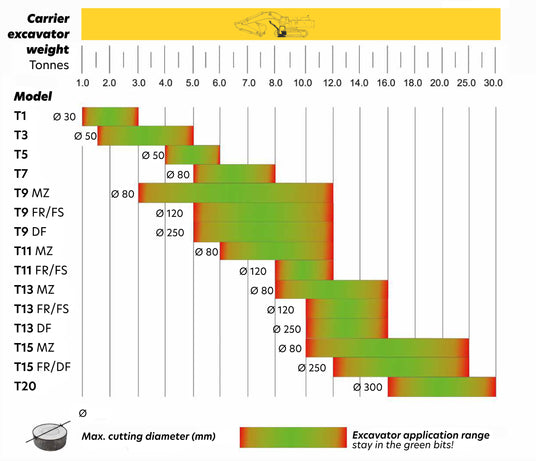
Flail & Mulcher selection guide
Each "T" flail/mulcher model range may have different rotor lengths and tooth systems available. We do not stock every option. We have condensed our range to the general, sensible combination.
The guide gives a rough idea of what excavator sizes fit each model range. Stay in the 'green'!
Further help on selecting a Flail or Mulcher
The key considerations
For some machines, particularly the smaller excavators, there is only going to be one unit that fits. This makes selection simple. For larger machines, particularly over 3 tonnes, there may be an overlap in model choice, so this guide gives some ideas.
Reach/Height/Ground: If you need to be able to cut high or a full reach, you may want to go for a smaller unit, rather than the largest your machine can carry and power. The also applies if you need to work on soft or uneven sites, or on gradients.
Hydraulic Flow and Power: The auxiliary hydraulics on all excavators is powered mostly form the redundant tracking and slewing circuits. If you want to track and cut, this may not be possible at all on smaller machines. It may only be possible on larger excavators if you use a smaller flail/mulcher than the maximum possible unit. It's always a good idea to check your excavators oil flow specifications.
Overall cut width: A simple point, but basically, a wider cutting rotor will give the maximum ground coverage and speed. For excavators 2 tonnes and above, there is an overlap in choice of units.
Maximum cut diameter: If you need to cut larger material, you will need a heavier duty mulcher with a shorter, heavier rotor and more aggressive teeth. For the largest units, rotors have fully fixed teeth similar to a large wood chipper.
T3-90 Flail Mulcher
Flail with blade cutters or light mulcher with hammer cutters for 2.0 to 5.0t mini excavators:
- Rotor with swinging hammer cutters or optional flail blades
- Cut width at 900mm
- Maximum cut diameter 50mm
T9-FS-105 HEAVY DUTY MULCHER
Heavy duty mulcher for 6.0 to 8.0 tonne excavators:
- FS type rotor
- Cut widthat 1050mm
- Maximum cut diameter 120mm
Also useful for similar work:
UK Tree & Hedge Cutting
The Rules In Brief
Whilst some areas of construction and landscaping and domestic gardens are not necessarily tied to these agricultural rules, there are some general guidelines within them that help to minimise the impact on wildlife and habitats.
- March 1st:
Do not cut or trim hedges or trees from this date, but you can carry out hedge and tree coppicing and hedge laying from 1 March until 30 April. - May 1st:
You must not carry out hedge or tree coppicing or hedge laying from this date. - September 1st:
You can cut or trim hedges and trees from this date.
Exceptions:
These vary between England and Wales and differ again in Scotland, but the key exceptions are:
- the hedge overhangs a highway, road or footpath over which there is a public or private right of way and the overhanging hedge obstructs the passage of, or is a danger to, vehicles, pedestrians or horse riders
- the hedge is dead, diseased, damaged or insecurely rooted and because of
- its condition, it or part of it, is likely to cause danger by falling on to a highway, road or footpath; or obstructs the view of drivers or the light from a public lamp

Why? Wildlife.
Principally, rules are set to protect wildlife. The main concern being bird nesting season, but other mammals and amphibians benefit from a break in both hedge and grass cutting.
Increasingly, there is concern over insect populations, especially bees, so allowing flowering hedges and wild grass areas to remain in flower is also better for encouraging a balanced and healthy ecosystem and maintaining biodiversity.

